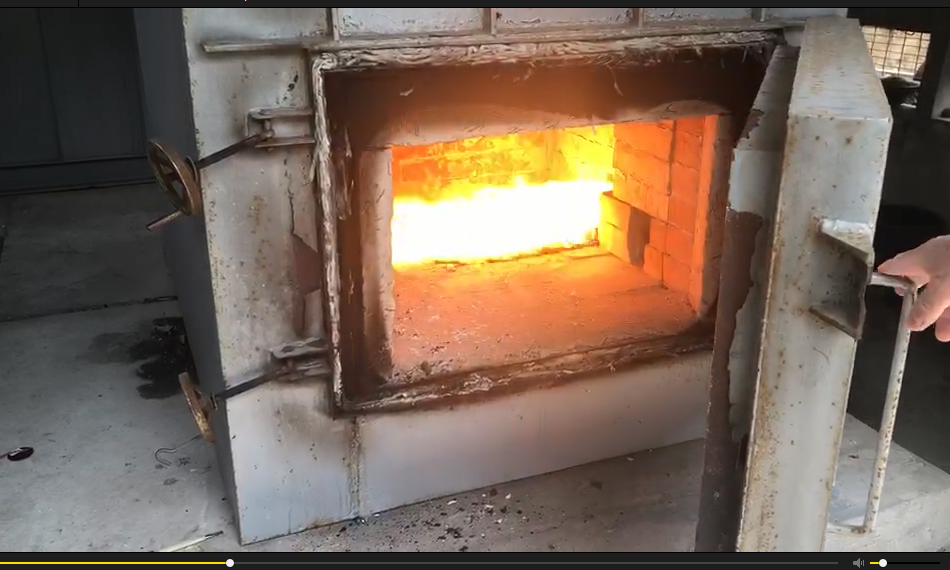The combustion, or burning, of solid waste proceeds through a succession of stages. Water is first driven in the unburned waste by heat produced from material burning nearby or from an auxiliary burner. As the waste pops up, carbon and other substances are released and converted to burnable gases. This is known as gasification. These gases are then able to mix with oxygen. If the temperature inside the burn chamber is high enough and maintained for a long enough period of time, the hot gases are completely converted to water vapour and carbon dioxide, which is then discharged into the atmosphere. If the temperature inside the burn chamber isn’t high enough and the burn time is too brief, complete conversion of the burnable gases does not occur and visible smoke is released into the atmosphere. Another consequence of burning at low temperatures is that the creation of pollutants that weren’t initially present in the waste. This process is known as de novo synthesis. Dioxins, furans and other complex chemical pollutants can be formed through this process.
Ash made from combustion takes the kind of fly ash or bottom ash. Fly ash is the fine particles carried away in the kind of smoke while bottom ash is the course non-combustible and unburned material that remains after the burn is complete. The type and amount of pollutants in the fly and bottom ash depend upon what waste is burnt and completeness of the combustion process.
The completeness of combustion is determined by all of the following factors:
Temperature
The temperature generated is a function of the heating value of the waste and auxiliary fuel, incinerator or burn unit layout, air supply and combustion control. Generally, temperatures that exceed 650oC with a holding time of 1-2 seconds can cause complete combustion of most food and other common household waste. Segregation of waste is required when using methods that don’t routinely attain these temperatures. Dual chamber incinerators, which are designed to burn complex mixtures of waste, hazardous waste and biomedical waste, must provide a temperature greater than 1000oC and a holding time of at least one second to ensure complete combustion and minimize dioxin and furan emissions. When these high temperatures and holding times are attained, waste will be completely burnt and ash, smoke and pollutant concentrations will be reduced.
Because exhaust gas temperatures vary from ambient to over 1000°C every time a batch waste incinerator is used, optional air pollution control systems with evaporative cooling towers and scrubbers are seldom recommended. However, it may be necessary to employ these systems with large continuous feed incinerators if further cleaning of exhaust gas is required by regulatory authorities.
Holding Time
Total combustion takes time. Holding time, otherwise known as retention or residence time, is the duration of time available to ensure the complete mixing of air and fuel, and therefore the total burning of waste. Low temperatures, low heating values of the waste and reduced turbulence require that the holding time be increased to complete the combustion process. This will aid in attaining the high temperatures at which waste could be completely burned. The amount of mixing is influenced by the form and size of the burn chamber and the way the air is injected. Passive under-fire ventilation attained during open burning does not result in sufficient turbulence for the burning of a wide variety of waste. Also, it’s important not to overfill the burn chamber as airflow could be blocked and the amount of turbulence further decreased. The more advanced incineration designs provide effective turbulence throughout the forced introduction of air directly into hot zones.
Composition of the Waste
The heating value, wetness and chemical properties of the waste has an effect on the combustion process and the pollutants that are found in the resulting smoke and ash. The higher the burn temperature, holding time and turbulence that are attained, the less impact the composition of the waste has on completeness of the burn.
Composition of the Waste
The heating value, wetness and chemical properties of the waste affect the combustion process and the pollutants that are contained in the resulting smoke and ash. The higher the burn temperature, holding time and turbulence that are achieved, the less effect the composition of the waste has on completeness of the burn.
